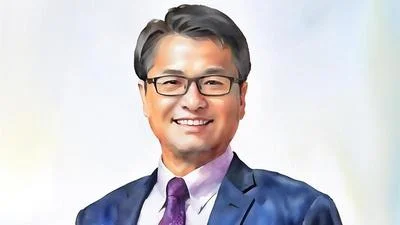The Congressional Record is a unique source of public documentation. It started in 1873, documenting nearly all the major and minor policies being discussed and debated.
“CELEBRATING ASIAN PACIFIC AMERICAN HERITAGE MONTH” mentioning the U.S. Dept. of Energy was published in the Senate section on pages S4835-S4837 on May 23, 2002.
The publication is reproduced in full below:
CELEBRATING ASIAN PACIFIC AMERICAN HERITAGE MONTH
Mr. AKAKA. Mr. President, every year during the month of May, our National comes together, in appreciation and celebration of Asian Americans and Pacific Islanders and their unique and varied history and contributions to our country. In fact, this May is the 10th Anniversary of the enactment of Public Law 102-450, which officially extended what was known as Asian Pacific American Heritage Week to the entire month of May of every year.
Although celebration of Asian American and Pacific Islander cultures and histories has become a large part of Asian American Pacific Islander Heritage Month, this time was designated primarily to focus on learning more about Asian Americans and Pacific Islanders and their history. Too few of us know in any great detail the stories of Asian Americans and Pacific Islanders. This is discouraging because Asian Americans and Pacific Islanders are such a vibrant addition to the mosaic that is America.
For instance, few realize that the first Filipino community in the U.S. was established in the Louisiana bayou around 1763. Not many of us know that the Bing cherry, a popular product of the Pacific Northwest, was developed by a Chinese American horticulturist named Ah Bing. And in Florida, another Chinese American, named Lue Gim Gong, developed an orange which was resistant to frost, a boon to the Florida agricultural industry.
Hawaii's Duke Kahanamoku was a five-time Olympic medal winner and is recognized internationally as the father of modern surfing. Duke Kahanamoku holds a unique place in surfing history and his Olympic feats are legendary over 80 years since their achievement.
One of the most amazing advances in medicine, organ transplantation, exists today largely because of a Japanese American, Dr. Paul Terasaki, who helped develop a test to determine the compatibility of a donated organ and its intended recipient.
Asian Americans and Pacific Islanders, have made names for themselves in the fields of music, acting, fashion, athletics, academia, medicine, science, literature, cuisine, and many more. Immigrants from Asia and the Pacific have contributed so much to the rich American tapestry. Given their longtime presence here on our shores, there can be no denying that Asian Americans and Pacific Islanders are an integral part of the fabric of America.
Aside from being an enriching and valuable addition to America, Asian American and Pacific Islanders are also one of the most diverse and fastest growing segments of our population. The Asian American and Pacific Islander community is made up of more than 36 distinct subpopulations with differing cultures, religions, traditions, and beliefs, speaking more than 100 different languages. U.S. Census figures show that the Asian American and Pacific Islander population grew at a rate about five times that of the national rate between 1990 and 2000. Asian Americans and Pacific Islanders now make up 4.2 percent of the U.S. population, around 11.9 million people strong. The Asian American and Pacific Islander population grew by 72 percent in a single decade. While my home state of Hawaii is probably most closely identified as having a large Asian American and Pacific Islander population, it is interesting to note that in the decade between the last two decennial censuses the Asian American and Pacific Islander population in Las Vegas, Nevada, increased 286 percent, in Atlanta, Georgia, there was a 200 percent increase, in Austin/San-Marcos, Texas, an increase of 175 percent, in Denver/Boulder/Greeley, Colorado a 115 percent increase, and in Detroit/Ann Arbor/Flint, Michigan, a 111 percent increase. Hopefully these figures will begin to dispel the notion that Asian American and Pacific Islander growth is strictly a West Coast or Eastern Seaboard phenomenon.
Asian Americans and Pacific Islanders are also key players in our nation's fight against terrorism and efforts to improve homeland security. For instance, my good friend and former colleague, Secretary of transportation Norman Y. Mineta, is working to keep our nation's roads and skies safe. His life story is truly amazing. Interned as a young boy during World War II by his own government, he grew up to be a public servant who has devoted his life to public service on behalf of our country. From his days as a local California politician, to his service in the U.S. House of Representatives, his formation of the Asian Pacific American Institute for Congressional Studies, his Chairmanship of the White House Initiative on Asian Americans and Pacific Islanders, his tenure as Secretary of Commerce, and now as Secretary of Transportation, Norman Mineta has broken down barriers and served his constituents and our nation with integrity and distinction.
As Chief of Staff, United States Army, General Eric K. Shinseki has distinguished himself as a leader of outstanding courage and impeccable integrity. The people of Hawaii are immensely proud of Ric Shinseki, a son of Kauai who has risen to the top post in the Army. Considered an enemy alien at birth, he is the first Asian American to wear four stars. General Shinseki's illustrious career speaks to his commitment and valor and represents the promise and greatness of America. In every way, General Shinseki exemplifies what is best about our nation and the men and women sworn to defend it.
I have mentioned some of the little known, yet positive, history of Asian Americans and Pacific Islanders, but before I conclude my remarks today, I want to highlight some less positive history, which is also little known. Our Nation has not always welcomed Asians and Pacific Islanders with open arms and sadly the treatment many immigrant groups received was truly shameful. I am speaking of events such as the internment of nearly 120,000 aliens and Americans of Japanese ancestry via Executive Order 9066 during World War II; the Immigration Act of 1924 which led to an almost complete halt of immigration from Asia; the exclusion of the Chinese laborers who built the transcontinental railroad from the famous photo of the driving of the golden spike at Promontory Point, ``whitewashing'' history of their important contribution; and the Chinese Exclusion Act, first enacted in 1882 and not repealed until 1943. Most recently, of course, we have the unfortunate acts of xenophobic and anti-Muslim violence perpetrated in the days and weeks after the September 11, 2001, terrorist attacks on our Nation where many of the victims were actually Asian Americans.
Regrettably, ignorance and prejudice continue to adversely impact Asian Americans and Pacific Islanders as they go about their daily lives. Last year, Representative David Wu from Oregon was denied entry to the Department of Energy on official business solely because of his national origin. Hawaii's Governor, Ben Cayetano, a Filipino America, was recently asked for his passport when checking into a hotel in Nevada. These high profile incidents underscore the indignities, insults, and discrimination that Americans of Asian or Pacific Islander descent encounter on a daily basis because some people feel they do not
``look American.''
There is an adage that says, ``Experience is a hard teacher because she gives the test first, the lessons afterwards.'' My hope, as the 2002 Asian American Pacific Islander Heritage Month comes to close, is that we, as a Nation, having been through these tests, have truly learned a lesson. The theme of this year's Asian American Pacific Islander Heritage Month is Unity in Freedom. The simplicity of this theme belies its profoundness. Only by having the freedom to celebrate our individual diversity can we truly come together as one Nation. If you go through your pockets or purses and take out any coin minted in the United States, you will see the motto: ``E Pluribus Unum''--from many, one. This motto first appeared on our coinage back in 1795. I see
``Unity in Freedom'' as a continuation of our Nation's lengthy and grand tradition of respecting an encouraging individual rights while simultaneously acknowledging that the key to our success as a country comes from our ability to lay our individual differences aside to work together for a common goal.
Mr. CORZINE. Mr. President, I rise today to recognize Asian Pacific American Heritage Month. Every May we acknowledge the many accomplishments and profound contributions that people of Asian and Pacific Island descent have made to New Jersey and to our country. The celebration also affords us the opportunity to recognize the strength the United States draws from its diversity, especially those contributions made by Asian Pacific Americans.
The formal recognition of Asian Pacific American Heritage began in 1979 with a weeklong celebration. In 1992, President George Herbert Walker Bush signed Public Law 102-450, devoting the entire month of May to acknowledge the history, concerns, and contributions of Asian Pacific and Americans.
Today, Americans of Asian and Pacific Islander lineage total nearly 11 million people. The Census Bureau projects that the Asian Pacific Islander population will grow to nearly nine percent of the American population by the middle of the century.
Americans of Asian and Pacific Islander heritage have been instrumental in the development and sustaining of both the national and New Jersey economies. Figures from the last economic census compiled in 1997 attribute more than 2.2 million jobs nationwide and over $306 billion dollars to Asian and Pacific Islander-owned businesses. New Jersey ranks fifth nationwide in the number of firms owned by Asian and Pacific Islanders with over 41,000 businesses generating sales and receipts totaling over $16.7 billion.
Although some Asian Pacific Americans are beginning to enjoy success in the United States, Asian immigrants and Asian Americans have met roadblocks. From racist Chinese exclusion laws to being unjustly held hostage in internment camps, Asian Pacific Americans too often have been shunned as untrustworthy foreigners, not accepted as ``true Americans'' because of their appearance or their cultural and religious traditions. Unfortunately, racism against Asian American continues today. Hate crimes perpetrated against Asians and Asian Americans have increased in frequency and intensity in the wake of the terrorist attacks against the United States.
All Americans should remember that we are a nation of immigrants and we should reaffirm our commitment to diversity, mutual respect and the American Dream. We must remember that although people we meet on the street, schools, stores or even airplanes may be of a different ethnic or religious background, they are still our co-workers, neighbors, and fellow Americans.
I hope you will join me in recognizing the hard work and sacrifices made by Asian immigrants and Asian Americans for our country. Throughout our history, Asian immigrants and Asian Americans have contributed to our nation's growth and have fought to protect our nation. Today, Asian Americans continue to help make our country great through contributions as diverse as they different countries of origin. I applaud the efforts of Asian immigrants and Asian Americans who continue to work towards the American dream, and I thank them for their many contributions to our great Nation.
____________________








